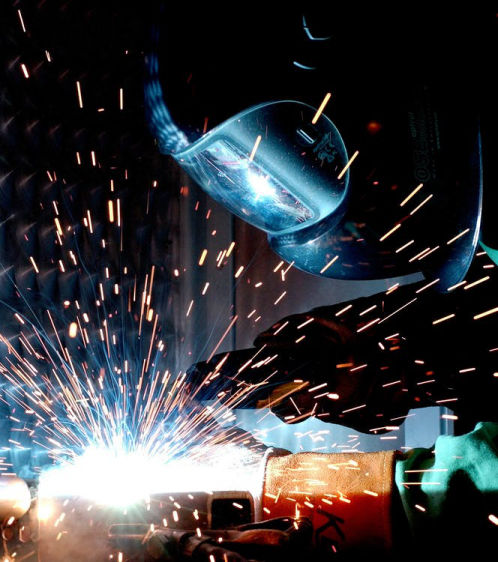Any metal that has at least 10.5 percent chromium may be considered stainless steel. This makes the types of stainless steel numerous, however, not all of them are used often.
Any metal that has at least 10.5 percent chromium may be considered stainless steel. This makes the types of stainless steel numerous, however, not all of them are used often. If you inquired from Arch City Steel, they would inform you that 4 types are commonly used and requested by clients. Let us take a look at those 4.
Austenitic
This type is the most common. Austenitic stainless steel has a high nickel content. Obviously, like all stainless steel, they also have varying degrees of chromium. Arch City Steel recommends these for different applications including kitchenware, engineering as well as medical applications. 2 common qualities about the different grades of austenitic steel are malleability and weldability. You can also use them in applications that require high corrosion resistance. The most utilized grade of austenitic stainless steel are:
- 304: This grade is used often and is probably the most affordable. It is also referred to as 18/8 because it contains 18% chromium and 8% nickel. Another grade of 304 known as 8/10 is composed of 8 percent chromium and 10 percent nickel.
- 316: For a more superior grade to 304, 316 is a great option. It is the second most common austenitic steel. 316 is more corrosion resistant than 304 because of an addition of molybdenum. About 2% molybdenum is added to make it corrosion resistant.
There is also a grade with low carbon composition, 304L, and 316L. Usually, they will contain less than 0.03% carbon. These grades can be welded with a reduced risk of corrosion. The 200 series is a lower grade that cost less.
Ferritic
This type of stainless steel is composed of minimal amounts of carbon. The carbon content will not exceed 0.10%. They also contain very low amounts of nickel and some of them may not have any nickel component. Molybdenum and Chromium however are present in higher amounts ranging from 10.5 to 27 percent. Because of their composition, they cannot be hardened using heat.
Ferritic types are magnetic and are used in applications that require stainless steel that can resist stress corrosion cracking. Their resistance to corrosion is higher than austenitic stainless steel. They can be used in vehicles as well as industries. The two common grades of ferritic stainless steel include:
- 430: This ferritic grade looks very much like 304 and many people cannot tell the difference between the two just by looking at them. it is also the most common ferritic grade. Its composition is 18% chromium, 1% manganese, 1% silicon, and about 0.08 carbon. This grade has various applications in the auto industry, rail tracks, architecture, and many other applications that require resistance to chemical corrosion.
- 434: it is widely used for its resistance to corrosion. The addition of molybdenum is what gives it the corrosion resistance. It is a nonhardenable alloy with good resistance to heat and oxidation. It can withstand temperature as high as 816 degrees. It is also easy to machine.
Duplex
Duplex stainless steel is a combination of ferritic and austenitic steels. Ideally, the composition is 50/50 of both but manufacturers may change it to 60/40 where the need may arise. Naturally, they are stronger than both types when it comes to corrosion resistance but they do not cost more since they have very little nickel. The application of duplex steel is very common in the extraction industry, especially in offshore oil mining. This alloy can be used in salt water and it will not be affected for a very long time. You may also find a more recent grade that is applied in architecture.
Martensitic
This alloy is more like ferritic steel but with a reduced amount of carbon. Martensitic stainless steel is not as resistant to corrosion as austenitic. Its main application is in architecture where it is good for structural support and reinforcement. Several stainless tools are also made from martensitic stainless steel. A common grade is 431.
- 431: This grade has a high chromium composition of 18 percent, nickel 3percent, and manganese 1 percent as well. It is used in making bolts and joints that can be used in mild marine environments. It is not recommended for welding and can be machined best when hardened.
- 420S45: It is the second most common martensitic grade and is commonly used for medical equipment as well as food-grade applications. Several tools are made from this grade of stainless steel.
Endnote
Sometimes it is necessary to ask the manufacturers about the options of stainless steel depending on what you would like to use it for. Although these are the 4 most common types, there are many others that may be applicable for unique uses. Alloys can be made simply by adding different amounts of other metals and that will give them the properties you require. Corrosion resistance can be increased by adding more chromium or molybdenum among others.





